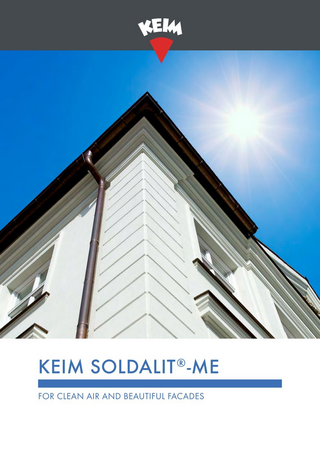Kirche Santa Maria Goretti
In the heart of the Pollino National Park lies the small mountain town of Mormanno, among whose hills the Church of Santa Maria Goretti has recently been built. With its organic architecture, the concrete building constructed by MC A - Mario Cucinella Architects, winner of the CEI 2011 pilot project, sets new standards. Not only is it based on the shape of a four-leaf clover, it also provides healthy air itself. For this purpose, it works with an air purification process inspired by nature: a facade coating with KEIM Soldalit-ME breaks down nitrogen oxides via photocatalysis.
- Architect:
- Mario Cucinella Architects
- Builder:
- Diocesi of Cassano all'Jonio
- Photos:
- Duccio Malagamba
- Location:
- Mormanno, Italy
- Products:
- Soldalit-ME
Inspired by nature: Colour coating purifies the air
The new church building is composed of four apsidal structures that are grouped around a centre and interlock with each other. They represent a modern continuation of the traditional Calabrian churches with their striking apses and are oriented towards an organic form: the cloverleaf, which with its four leaves represents the ground plan of the monumental concrete building.
However, the building is not only visually content with an allusion to organic architecture, but also implements its demands in other respects: Inspired by photosynthesis, it takes an active role in improving air quality. It uses photocatalysis to break down nitrogen oxides and other air pollutants under the influence of sunlight. Nitrogen oxides are oxidised to harmless nitrate, which is washed off the surface when it rains. Ozone is converted into oxygen. This is made possible by a photocatalyst incorporated in KEIM Soldalit-ME, the white façade coating of the building. This silicate-bound paint does not consume itself and remains active as long as the crystals are supplied with energy by light. At the same time, it protects the building from premature growth. Dirt particles serving as nutrients for microorganisms are immediately washed away. In this way, the exterior remains colour-stable and the air around the house of worship remains clean.
Organic shapes everywhere
The entrance to the building's interior is through a high cut between the two frontal concrete apses. At the top, it forms a large cross that is illuminated at night and thus visible from afar. Words referring to the life of Maria Goretti are also engraved in the adjacent concrete walls. In the interior of the 16 m high building, the architect juxtaposes the wall structure, which is kept rough here, with an illuminated room installation made of translucent fabric panels suspended from the ceiling. In this way, he picks up on the shape of the church. Moreover, with the fabric veils he recalls the geometries of Italy's most impressive baroque churches, including Francesco Borromini's San Carlo alle Quattro Fontane and Sant'Ivo alla Sapienza, both in Rome.
Clergy can enter the church behind the altar through a sacristy, also hidden in the curved walls. The church bells are also hidden in the walls. In front of it are a lectern designed by the artist Giuseppe Maraniello, a tabernacle, a baptismal font and a figure - the Virgin Mary in stone, bronze and mosaic. They also play with curves and curved lines, reflecting the flowing shapes of the walls. The wooden and steel furniture designed by Mario Cucinella Design, on the other hand, was deliberately designed to be minimalist and austere in order to emphasise the architectural and sculptural elements of the church interior.
Parish centre with a green heart
The church is complemented by a parish centre, also designed by Mario Cucinella Architects, which houses a meeting room for the congregation, church classrooms and the priest's house. This essentially single-storey concrete building tapers off to the north in an undulating jagged roof line, echoing the dialogue with the four-leaf clover, the ground plan of Santa Maria Goretti. A photovoltaic system, biomass heating and a natural ventilation concept help to keep the church's energy consumption and maintenance needs low. Around the building, planted courtyards along with a kitchen garden and green roofs increase the quality of stay and, together with the facade coating, ensure clean air.
Author: Christine Ryll

